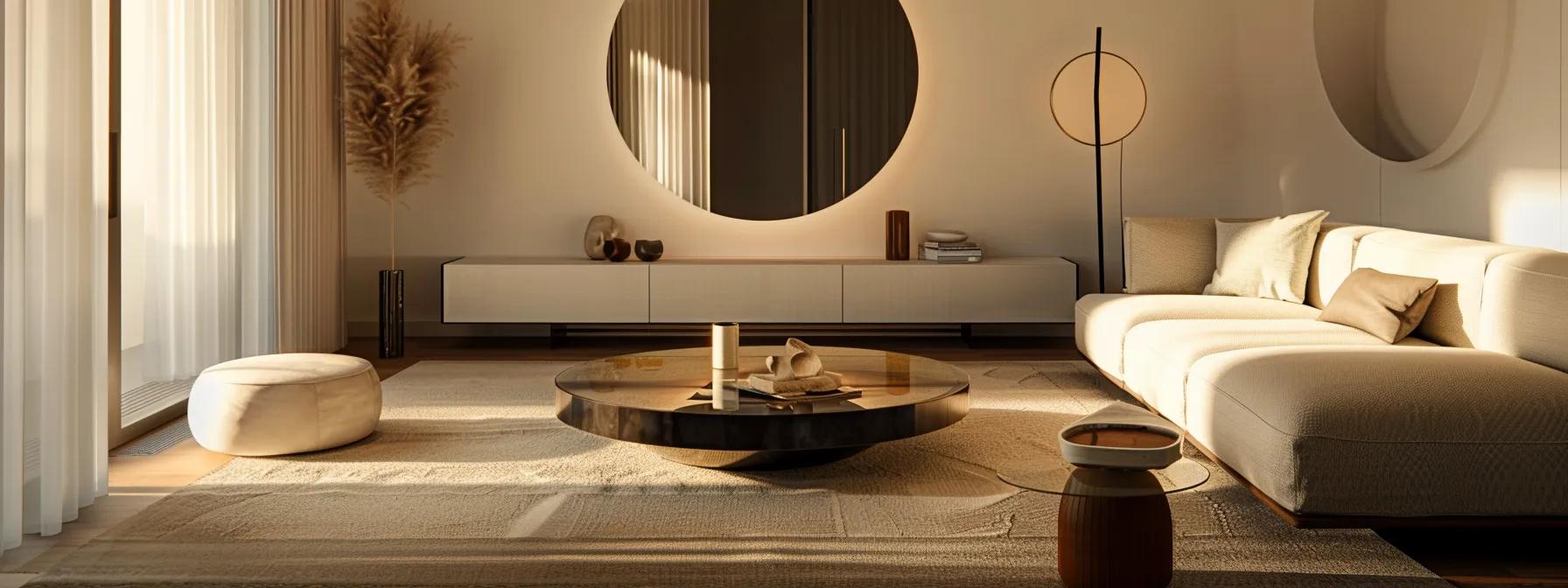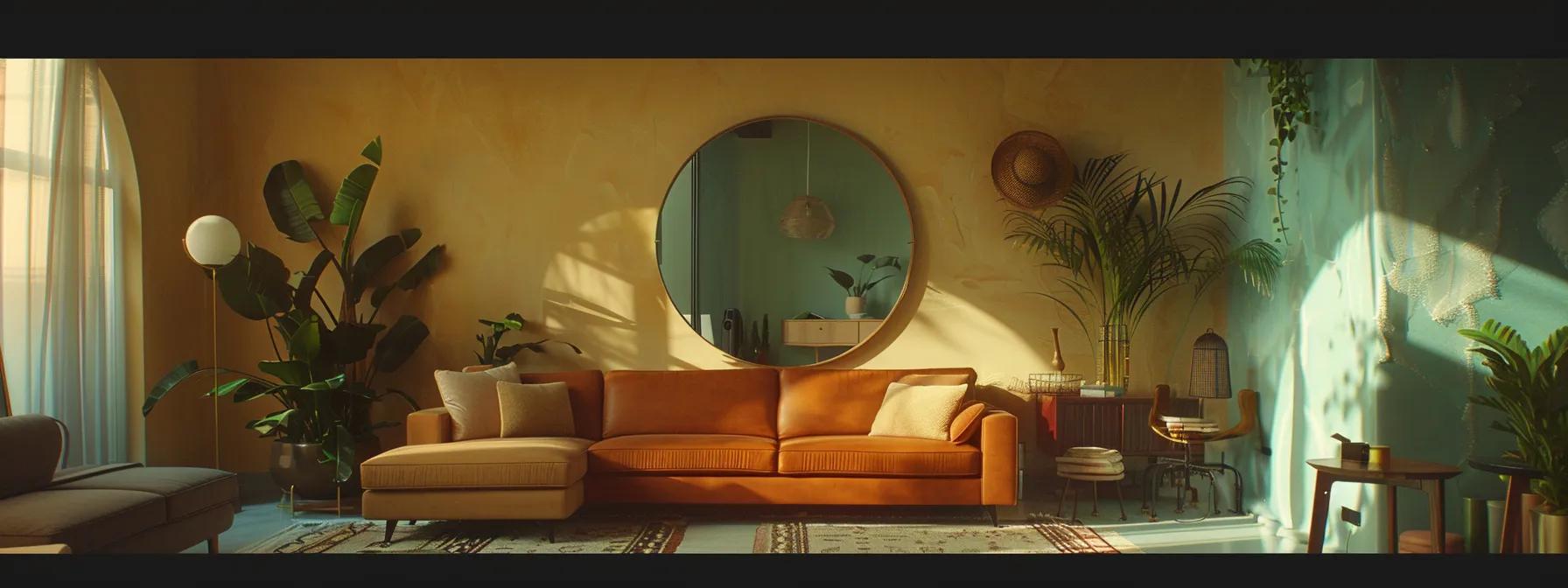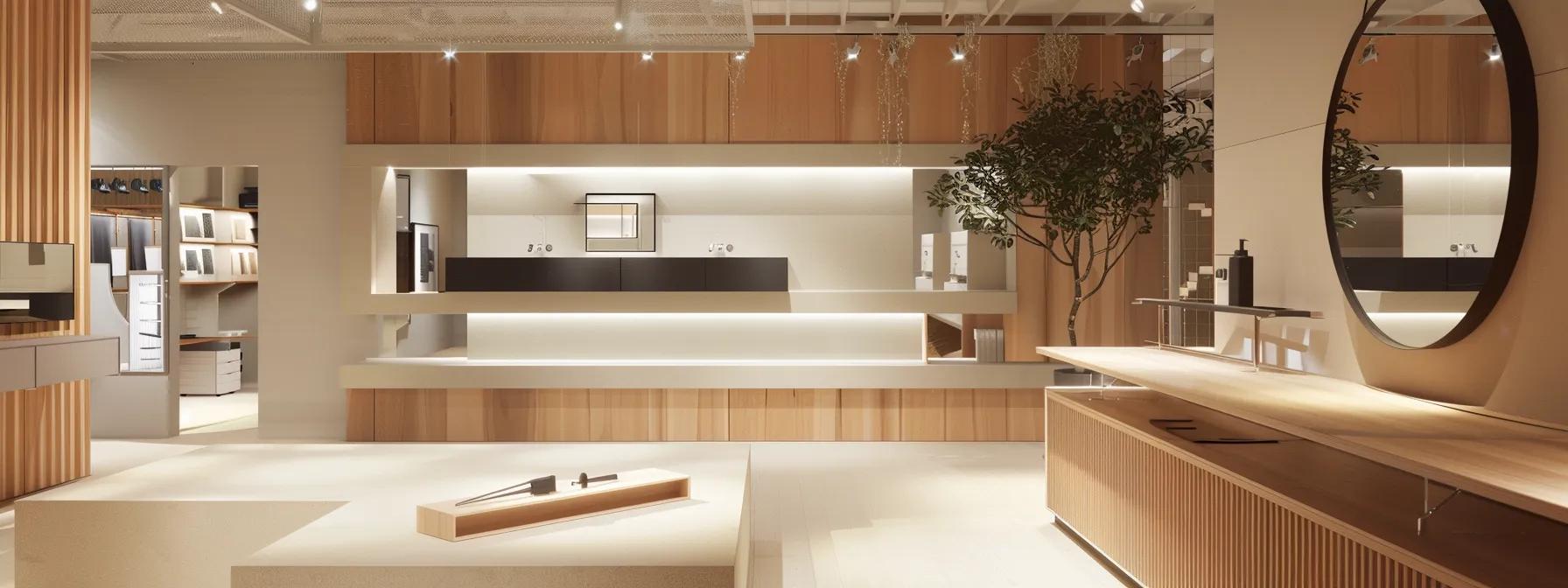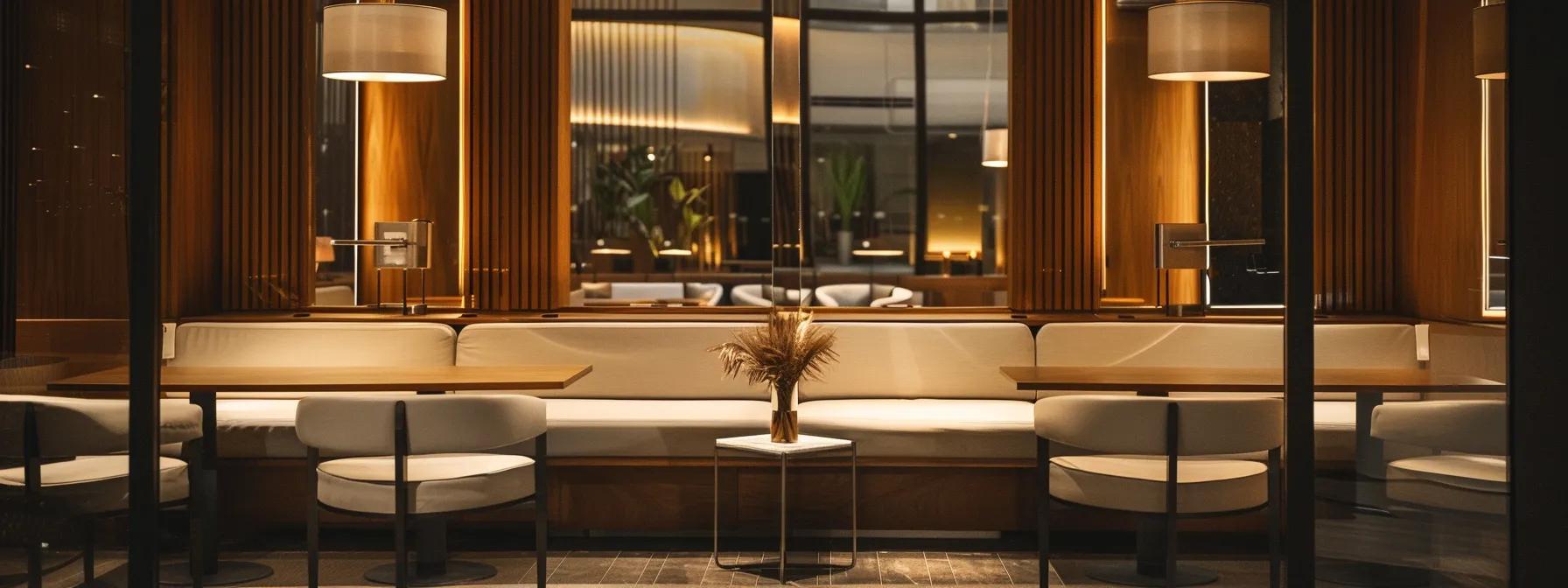How to Use Mirrors to Make a Small Room Look Bigger With Effective Design and Placement
Mirrors have long been celebrated as transformative elements in interior design, not only for their practical uses but also for their ability to alter the perception of space. In small rooms, every square inch matters. Strategic mirror placement can reflect light, enhance brightness, and create a visual expansion of the room. This guide explores how the right mirror type, design, and placement can improve lighting and spatial perception. It also provides guidance on selecting custom mirror designs and professional installation tips. By examining various mirror styles and arrangements, homeowners, interior designers, and mirror enthusiasts can achieve a more open and inviting interior that supports feng shui principles and refined design.
Key Takeaways – Make a Small Room Feel Bigger with Mirrors
- Pick the right mirror: Large frameless panels, slim-framed rectangles, or round/oval shapes spread light without visual bulk.
- Place for maximum bounce: Hang mirrors directly opposite windows and near lamps to push daylight or LED glow into dark corners.
- Keep frames minimal: Thin metal, light wood, or no frame at all keeps the eye on the reflection, not the border.
- Use vertical & horizontal tricks: Tall mirrors stretch height; wide mirrors widen walls; ceiling or floor mirrors add dramatic depth.
- Pair with light décor: Neutral paint, low-profile furniture, and clear sightlines let the reflections work overtime.
- Consider custom cuts: Tailored sizes and smart add-ons (LED, anti-fog) fit odd niches and amplify brightness.
- Install safely: Heavy-duty anchors, laser-level alignment, and pro help for big pieces guarantee security and perfect angles.
- Long-term payoffs: More perceived space, better natural light, lower energy use, and a calmer, airier vibe every day.
What Are the Best Types of Mirrors for Small Rooms?
The effectiveness of a mirror in a small room depends on its ability to maximize light reflection and create an uninterrupted visual flow. For compact spaces, the most favorable mirrors include minimalist, frameless designs or those with soft reflective finishes that do not encroach on the available area.
Popular options include:
- Full-length mirrors that reflect natural light and offer a clear view of the room.
- Large wall mirrors with slim profiles that create an unbroken reflective surface.
- Beveled mirrors with defined edges that add an elegant touch without dominating the space.
Each style not only improves aesthetics but also enhances light diffusion and increases the perceived dimensions of the room.
Which Mirror Shapes Create the Illusion of More Space?
Mirror shape plays a significant role in how space is perceived. Rectangular and large square mirrors stretch visual boundaries, making the room appear larger. Circular mirrors add softness and offer a focal point without overwhelming the area, while oval mirrors combine both linear and curved elements for a balanced look. For example, a vertical rectangular mirror can accentuate height, whereas a horizontal one can emphasize width. The chosen shape should suit the room’s proportions and desired visual effect.
How Do Frame Styles Affect Room Perception?
Frame style is crucial, as minimalist frameless designs or thin-profile frames keep the focus on the reflection, enhancing a room’s openness. In contrast, overly ornate frames may distract from the mirror’s function and make the room feel cluttered. Lightweight finishes like matte silver or natural wood subtly complement the mirror. The frame should align with the room’s overall decor—streamlined for modern interiors or delicate and traditional for classic settings—ensuring that the mirror acts as a natural extension of the room’s design.
What Materials and Finishes Work Best for Small Room Mirrors?
High-quality materials and finishes are essential in small mirrors. Glass with a reflective coating that minimizes distortion is ideal for crisp, clear reflections. Polished or mirrored finishes with minimal texture boost brightness, while anti-glare and scratch-resistant coatings increase the mirror’s durability. Tempered glass is a popular choice for its clarity and safety, and acrylic mirrors provide a lighter alternative with similar reflective properties. Neutral or subtle metallic finishes allow the mirror to integrate seamlessly with various interior palettes.
Where Should You Place Mirrors to Maximize Room Size Perception?

Proper placement of mirrors is key to transforming a small room. The best practice is to position mirrors directly opposite windows so that natural light is captured and dispersed throughout the space. This not only brightens the room but also creates an illusion of added depth. In addition, placing mirrors near high-traffic areas or focal points can provide a central design element that unifies the room.
Key considerations include aligning the mirror with architectural features like doorways or decorative accents while ensuring it does not overwhelm the space. Balancing the number of mirrors is important—too many may cause visual clutter, and too few may not provide a spacious feel.
How Does Mirror Placement Affect Natural and Artificial Lighting?
When mirrors are correctly aligned with natural light sources such as windows or skylights, they reflect daylight into darker corners, reducing dependency on artificial lighting. This reflection balances the illumination, making the room feel larger and more inviting. Similarly, when placed near lamps or overhead lights, mirrors can amplify the brightness of artificial lighting, ensuring an even distribution of light that enhances the room’s overall ambiance.
What Are the Optimal Wall Locations for Mirror Installation?
The ideal wall for mirror installation is one that offers the most open, unobstructed space. For example, a mirror placed above a fireplace or along a lengthy corridor can extend the visual dimensions of that feature. Installing the mirror at eye level usually achieves the most natural reflection and integration with the room. In multi-functional spaces, a centrally located mirror can help unify different areas by reflecting various light sources and decor elements.
Can Ceiling and Floor Mirrors Enhance Small Room Space?
Ceiling and floor mirrors are creative alternatives for expanding perceived space. Ceiling mirrors draw the eye upward, making the ceiling appear higher—a great solution for rooms with low ceilings. Floor mirrors, by reflecting close-to-ground details, add depth to the lower portion of the room. When combined with traditional wall mirrors, these placements create layered reflections that further soften room boundaries and enhance the spatial experience.
How Can Mirrors Improve Lighting to Make Small Rooms Look Larger?
Mirrors work as natural light amplifiers, significantly improving both ambient and directed illumination in small spaces. By reflecting daylight, mirrors can brighten dark corners and lessen the need for artificial lighting, thus creating an inviting and airy atmosphere. When carefully chosen and positioned, mirrors enhance visual clarity and reduce shadows that can make a space feel cramped.
Integrating mirrors with both natural and artificial light sources ensures an even distribution of light, maximizing the visual impact and making the room appear more spacious.
Why Is Reflecting Natural Light Important in Small Spaces?
Reflecting natural light is fundamental to creating an open, airy feel in a room. Natural daylight offers a broad spectrum of illumination, and when it bounces off a mirror, it fills shadowed areas and mixes with ambient light. This not only increases brightness but also provides a psychological boost, making the space feel less confined and more pleasant. Additionally, emphasizing natural light aligns with sustainable practices by reducing the need for extra electrical lighting.
How Do Mirrors Amplify Artificial Lighting Effects?
Mirrors intensify artificial lighting by redistributing light emitted from fixtures. When light from lamps or recessed lights hits a mirror, it is spread throughout the room, reducing dark spots and unifying the light distribution. This amplification is particularly useful during the evening or on overcast days when natural light is minimal. Techniques like pairing mirrors with dimmable LED fixtures allow for fine control over the ambient lighting, ensuring the space remains inviting and well-lit.
What Lighting Combinations Work Best With Mirrors?
Combining different types of lighting around mirrors can significantly enhance their effect. Ambient lighting sets the overall mood, while task lighting focuses on specific areas like workspaces or reading corners. Accent lighting, used around architectural details, highlights the mirror itself. A balanced mix of warm ambient lights and cooler task lights creates a layered, sophisticated lighting scheme that expands the visual field and complements the mirror’s reflective properties.
What Interior Design Tips Complement Mirrors to Expand Small Rooms?

Mirrors perform best when integrated into a broader interior design strategy that emphasizes openness. Using a neutral or pastel color palette on walls creates a soft background that maximizes the reflective qualities of mirrors without competition. Light colors help the room feel larger, complementing the mirror’s function to bounce light around.
Furniture arrangements should be planned to maintain clear sightlines. Low-profile, streamlined furniture avoids obstructing the mirror’s view and minimizes visual clutter. Thoughtfully chosen decorative elements—such as art, plants, and subtle textures—can further enhance the mirror’s impact by adding depth and continuity to the design.
How Does Color Palette Influence Mirror Effectiveness?
Light, neutral colors enhance mirror effectiveness by reflecting light without creating harsh contrasts. Soft whites, creams, and pastels allow the mirror’s reflection to blend seamlessly with the room, making ceilings and walls appear farther apart. Conversely, dark colors may absorb light and reduce the reflective benefit, making the space feel smaller.
Which Furniture Arrangements Work Best With Mirrors?
The best furniture arrangements in a small room are those that maintain open pathways and clear sightlines. Avoid placing bulky or obstructive pieces directly in front of a mirror. Instead, choose streamlined furniture that complements the reflective surface. Symmetrical layouts can also enhance balance and make the room feel more expansive, while multi-functional pieces help reduce clutter.
How Can Decorative Elements Enhance Mirror Impact?
Strategically placed decorative elements can amplify a mirror’s impact. For example, a modern sculpture or abstract artwork adjacent to a mirror creates a focal point that draws the eye and adds depth. Light textiles and greenery can soften the mirror’s edges, creating a harmonious aesthetic that supports the illusion of greater space without overwhelming the design.
How to Choose Custom Mirrors for Unique Small Room Dimensions?
Custom mirrors provide tailored solutions when standard sizes or shapes do not meet the unique requirements of a room. A custom-designed mirror can be perfectly integrated into irregular spaces, align with specific furniture layouts, and complement architectural features. This tailored approach maximizes the impact of reflected light and ensures the mirror fits precisely into the intended space.
What Are the Benefits of Custom Mirror Fabrication?
Custom mirror fabrication offers several advantages over off-the-shelf options. It allows for precise adjustments in size, shape, and finish, ensuring every reflective angle is optimized. This approach improves light dispersion and creates a coherent visual experience. Custom mirrors can also incorporate enhanced safety features and specialized coatings for durability, making them an excellent long-term investment for high-traffic areas.
How to Measure Your Room for Custom Mirror Design?
Accurate measurements are essential for designing a custom mirror. Begin by measuring wall lengths, ceiling heights, and pinpointing the locations of windows and doors. Ensure that the proposed mirror’s dimensions complement the remaining wall space without overcrowding it. Creating a scale drawing or using digital design tools can help visualize the mirror’s effect, and consulting with professionals ensures precision in the design process.
What Styles and Sizes Are Available for Custom Mirrors?
Custom mirrors come in many styles and sizes. Options range from ultra-modern frameless panels to intricately designed vintage frames. The mirror’s size can be adjusted to fill an entire wall or act as a statement above a console. Specialty shapes like circular, oval, or geometric forms offer creative expressions that align with a room’s personality. Additionally, advanced options like built-in LED lighting or smart glass technology further expand custom mirror capabilities.
What Are Professional Installation Tips for Mirrors in Small Rooms?

Professional installation ensures that mirrors are securely and correctly integrated into the room. Using suitable mounting hardware—such as heavy-duty wall plugs and adjustable brackets—is vital for safety and for maximizing the reflective effect. Proper planning, including accurate measurements and marking the intended position, helps prevent misalignment and potential damage.
How to Safely Install Large Mirrors Without Damage?
Installing large mirrors safely requires adherence to strict protocols. Specialized mounting systems, like French cleats or mirror clips, allow for secure attachment while permitting slight adjustments. It is important to smooth the wall surface, possibly add a protective backing, and reinforce mounting points. Using quality adhesives and fasteners further secures the mirror, especially in areas prone to vibrations. Professional installers often employ laser levels to ensure the mirror is set at the optimal height and angle.
What Tools and Techniques Ensure Precise Mirror Placement?
Professionals use a variety of tools to guarantee precise mirror placement. Laser levels, stud finders, and high-quality measuring tapes ensure that the mirror is aligned with key room features. Techniques such as dry fitting allow for adjustments before final installation. Removable guides can mark the mirror’s outline on the wall, providing a clear visualization of the final placement. These methods work together to achieve an installation that is secure, balanced, and optimally positioned for visual impact.
When Should You Hire Professionals for Mirror Installation?
Professional installation is recommended for large, custom, or heavy mirrors. When the mirror design is intricate or the wall poses structural challenges, expert installation minimizes risks of damage or personal injury. Professionals ensure that custom features like built-in lighting or smart technology function harmoniously, delivering both aesthetic and safety benefits.
How Do Mirrors Affect Space Optimization Beyond Visual Expansion?
Mirrors not only create the illusion of a larger space but also improve the overall functionality and flow of a room. Strategically placed mirrors can influence furniture arrangements, making movement easier and enhancing accessibility. They redistribute visual weight to create balance in an asymmetrical layout and can double as practical surfaces for daily activities. In essence, mirrors optimize space by both beautifying the environment and streamlining room functionality.
Can Mirrors Improve Room Functionality and Flow?
Yes, mirrors enhance functionality by serving multiple purposes. They extend sightlines, which fosters smoother movement throughout the room, and consolidate functions by reducing the need for additional reflective surfaces. This multipurpose approach frees up space for other uses while maintaining a cohesive and open design.
How Do Mirrors Influence Psychological Perception of Space?
Mirrors have a strong psychological effect; by doubling the visual input, they trick the brain into perceiving a larger space. This mental expansion can reduce feelings of confinement and promote a sense of freedom and tranquility. Environments with ample mirror reflections tend to be more calming and inviting, helping residents feel more comfortable.
What Are Long-Term Benefits of Mirror Use in Small Rooms?
Over time, mirrors offer benefits beyond immediate visual expansion. They contribute to energy efficiency by maximizing natural light and reducing the need for constant artificial lighting. Additionally, the enhanced ambiance they create can improve mood and social interaction. Strategically placed mirrors provide lasting improvements in lighting, functionality, and overall interior design quality.
Frequently Asked Questions
Q: How do mirrors create the illusion of more space?
A: Mirrors reflect light and images, making walls appear farther apart and the room larger. This optical trick is especially effective in small spaces.
Q: What mirror placement yields the best light reflection?
A: Placing mirrors directly opposite windows or skylights captures natural light efficiently. Positioning them near artificial light sources like lamps also amplifies brightness.
Q: Are custom mirrors worth the investment in small spaces?
A: Yes, custom mirrors offer tailored solutions for unique room dimensions. They maximize reflective functionality, enhance lighting, and integrate seamlessly with the decor.
Q: Can mirrors improve room functionality aside from aesthetics?
A: Absolutely. Mirrors facilitate better furniture arrangements and provide practical reflective surfaces, streamlining the room’s layout.
Q: What should I consider when selecting a mirror for a small room?
A: Consider the mirror’s type, shape, frame style, and finish. Focus on placement relative to natural and artificial light, and choose a design that complements your interior decor.
Q: Is professional mirror installation necessary in small rooms?
A: Professional installation is recommended for large, custom, or heavy mirrors to ensure safe, secure, and optimal positioning.
Q: How do mirrors affect the psychological perception of space?
A: By doubling the visual input, mirrors make a room seem larger and more open, enhancing comfort and reducing feelings of confinement.
Final Thoughts
Mirrors are versatile design elements that can transform small rooms by reflecting light, enhancing brightness, and creating a sense of expanded space. With careful selection based on shape, frame style, and material finish, a mirror can perfectly complement both the aesthetics and functionality of a room. Strategic placement—whether on walls, ceilings, or floors—maximizes natural and artificial lighting benefits. Investing in custom mirror solutions and professional installation can yield long-lasting benefits, such as improved energy efficiency and a more inviting living environment.
| Mirror Type | Key Benefit | Recommended Use Case | Typical Size Range |
|---|---|---|---|
| Full-Length Mirror | Reflects entire room display | Entryways and bedrooms | 48″ x 18″ to 72″ x 20″ |
| Wall-Mounted Frameless | Minimal visual obstruction | Living rooms and hallways | 36″ x 24″ to 60″ x 36″ |
| Custom-Shaped Mirror | Tailored design and size | Unique spaces with irregular dimensions | Varies by design |
| Beveled Mirror | Enhances depth with edge detail | Bathrooms and accent walls | 24″ x 24″ to 48″ x 48″ |
| Ceiling/Floor Mirror | Expands vertical or horizontal space | Low-ceiling rooms or small studios | Custom, based on layout |
The table above summarizes common mirror types along with their key benefits, optimal use cases, and typical size ranges. Selecting the right mirror based on these parameters is key to maximizing both its reflective efficiency and overall room aesthetics.
Integrating these insights into your interior design can empower you to create a visually spacious and inviting environment. As trends embrace minimalist and functional aesthetics, mirrors remain a timeless solution to overcoming spatial limitations while enhancing both style and practicality.


